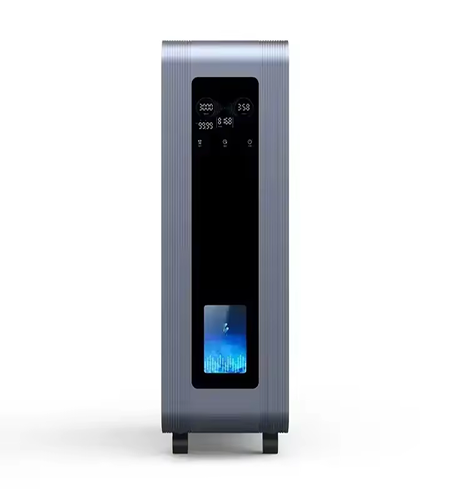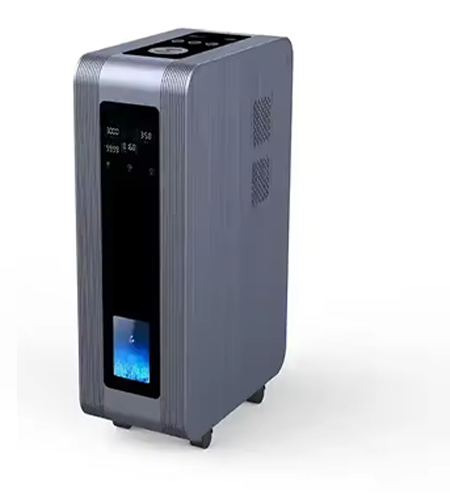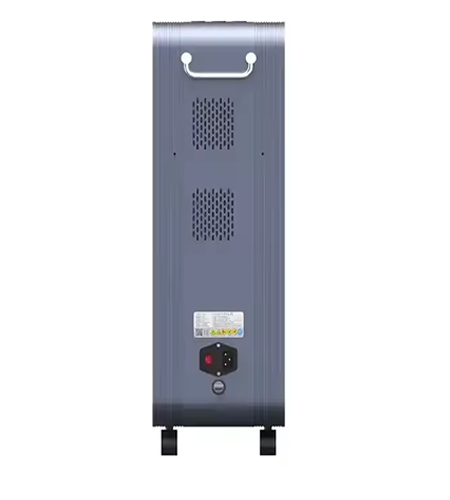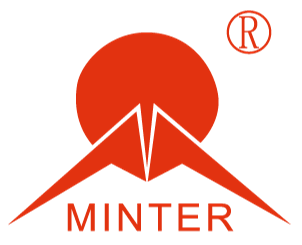
Minter, познати бренд у индустрији здравствене заштите, недавно је лансирао свој иновативни генератор водоне воде. Овај најсавременији производ дизајниран је да корисницима обезбеди чисту и сигурну водоносну воду, која је позната по бројним здравственим предностима. Као водећи провајдер производа за здравствену заштиту као што су инхалатори водоника, флаше за водону воду, стоматолошки производи, производи за масажу и опрема за физичку терапију, Минтер-ов генератор водоне воде је доказ посвећености бренда промовисању здравијег начина живота.
Гератор водоне воде: промјена у здравственој заштити Гератор водоне воде из Минтера је јединствени производ који користи напредну технологију за производњу воде богате водоном. Ова вода је богата антиоксидансима и доказано је да повећава ниво енергије, побољшава варење и подржава општу благостање. За разлику од других система филтрације воде, генератор водоне не зависи од хемикалија или мембрана за чишћење воде. Уместо тога, она користи процес који се зове електролиза како би раздвојила молекуле воде на водоник и кисеоник. Добијени водоник се затим раствори у чисту воду, стварајући моћно антиоксидантно раствор које може помоћи у заштити од штетних слободних радикала.

Бренд Минтер је синоним за индустрију здравствене заштите и сада је објавио своју најсавременију машину за инхалацију водоника коју могу користити компаније које желе да креирају програме за добробит својих клијената или запослених. Употребљава водоносну енергију на напредним нивоима који су раније били непознати како би се пружило терапијско искуство; стога је погодан за центри за добробит, лекотјечне одмаралишта, као и корпоративне здравствене шеме.
Наши инхалациони апарати који користе водоник нису попут других јер поред науке они такође спајају удобност. Обично генерише веома чист молекуларни водоник, чиме се осигурава сигурна употреба кроз инхалацију од стране људи којима су потребни антиоксиданси. Овај гас из Минтера може се удихати без ризика или неефикасности. Направио се довољно једноставним чак и за почетнике; може се персонализовати поставке у зависности од потреба, што их чини најприкладнијим за различите радна места где је индивидуализација најважнија.

Бити на челу здравствене заштите је наш циљ у Минтеру. Наша најсавременија машина за инхалацију водоника има способност да снабдева концентрисаном терапијом водониним гасом за различите терапијске сврхе, чиме се поставља нови тренд у овом сектору. Ми већ доста времена радимо и зато знамо шта је потребно да се произведе квалитетна производа који ће задовољити тренутне потребе здравствене индустрије.
Најновија технологија и строга правила производње користе се при производњи инхалатора за водоник од стране Минтера. У нашој софистицираној фабрици, ове машине се производе са прецизношћу и изврсношћу захваљујући нашој висококвалификованој радној снази. Третман инхалацијом водоника познат је по својим потенцијалним користима у смањењу упале, оксидације и побољшању опште функције ћелија које су добро примљене широм света. Ова револуционарна терапија довела је до алтернативних опција за лечење различитих болести, укључујући, али не ограничавајући се на невролошке болести као што су ПД или АД, плућне болести као што су ЦОПД и срчано-васкуларни поремећаји међу другима.

Дисање водони је постало популарна метода за природно и ефикасно побољшање здравља. Минтер је предузеће које ствара ову врсту опреме међу другим производима за здравствену заштиту. Они су измислили најнапреднији дисачки апарат који користи водоник познатог човечанству. Наши примарни производи су стоматолошке производе као што су инхалатори водоника, уређаји за масажу, опрема за физиотерапију и флаше за водоносну воду.
Апарат за инхалацију водоника Минтер је довољно мали да се носи и омогућава корисницима да удушу чист водоник за различите здравствене користи. Машине филтрирају нечистоће из околног ваздуха тако да само најчистији облик овог елемента можете да дишете, што помаже у смањењу нивоа упале, а истовремено и јача имунски систем у целини, што повећава наш укупни осећај доброће.
Једна од кључних карактеристика која га чини изузетним међу другима је безбедност; вишеструка подешавања за заштиту која осигурава да се нико не повреди док их користи су постављена у производњу, као што је функција аутоматског искључивања када температура порасте превише изнад контролних граница, али не заборављајући о механизму за заштиту од прегре

Potraga za novim rešenjima u oblasti zdravstvene zaštite rezultirala je izumom mašine za disanje vodonika. Ovo je posebna vrsta opreme koju je razvila kompanija Minter, poznata po svojim kvalitetnim proizvodima u sektoru. Tako se može reći bez ikakve sumnje da je naš aparat za inhalaciju prekretnica kada je u pitanju pružanje zdravstvene zaštite.
Minterova mašina za inhalaciju vodonika koristi naprednu tehnologiju kako bi pružila jedinstveno iskustvo isceljenja. Proizvodi čisti vodonik kroz naučne metode i ovaj gas je ono što pacijenti udišu. Ove molekuli pomažu u neutralizaciji štetnih supstanci unutar ćelija, čime se promoviše bolja upotreba kiseonika na ćelijskom nivou. Pored toga, pruža neinvazivnu opciju lečenja za zdravstvene radnike koji žele da poboljšaju respiratorne funkcije, kao što su smanjenje upale oko pluća ili poboljšanje nivoa energije generalno, među ostalim. Bez sumnje, Minterov uređaj garantuje sigurne procedure dok postiže željene rezultate, čineći ga nezamenljivim komponentom za svaku medicinsku instituciju.

Цхенгцхоу Минтер Медицински уређаји Цо, Лтд. је професионални добављач производа за здравствену заштиту. Са многогодишњим искуством, Минтер има свој специјализовани центар за истраживање и развој и производњу медицинске опреме.
Од пажљивог избора сировина до строге инспекције производа, ми осигуравамо да сваки корак испуњава највише стандарде квалитета. Сада је већина Минтерс производа прошла ЦЕ, ИСО, РОХС, ФЦЦ и друге сертификације.
Наши главни производи су производи за здравствену заштиту као што су инхалатор за водоник, боца за водоник, стоматолошки производи, производи за масажу и опрема за физиотерапију.
Као што увек приоритет задовољство клијената и пружају одличну подршку након продаје, наши производи су освојили велику популарност међу купцима из Северне Америке, Јужне Америке, Западне Европе, Источне Европе, Југоисточне Азије, итд.
Наш одјељ Р&Д пружа снажну техничку подршку и омогућава нам да понудимо ОЕМ и ОДМ странским купцима широм света. Срдачно добродошли клијентима из куће и на броду да дођу да посете нашу фабрику и успоставе сарадњу са нама. Радујемо се да ћемо више сарађивати.
Имамо елитни тим који се фокусира на истраживање и развој производа, и сарађујемо са бројним познатим универзитетима како бисмо постигли стратешку сарадњу у производњи, образовању и истраживању, увели међународну напредну технологију и интегрисали у производе.
Са посвећеношћу изврсности, Минтер спроводи строге мере контроле квалитета током целог производње. Од пажљивог избора сировина до темељне инспекције производа, сваки корак се придржава највиших стандарда квалитета. Ова посвећеност осигурању квалитета резултира производима који конзистентно испуњавају или превазилазе регулаторне сертификације као што су ЦЕ, ИСО, РОХС, ФЦЦ, обезбеђујући поузданост и безбедност за купце широм света.
Ми пружамо услуге ОЕМ / ОДМ и професионалну техничку подршку за све купце који нам шаљу узорке производа, дизајнираћемо и развијамо боље на основу узорка.За сваког купца,изаберећемо најбоље одговарајући материјал,а такође и иновативни материјал за њихове производе.
Минтер је нагласио задовољство клијената и врхунску подршку након продаје, што је довело до велике популарности његових производа у различитим регионима, укључујући Северну Америку, Јужну Америку, Западну Европу, Источну Европу и Југоисточну Азију. Ова широко распрострањена похваљање означава способност бренда да резонира са глобалном публиком и успостави снажно присуство на кључним тржиштима.

30
Apr
30
Apr
30
AprТо је уређај који генерише ваздух богати водонитом за удиш, промовишући здравствене предности.
Он електролизира воду да би произвео водоник, који корисници могу да удушу.
Висока ефикасност, једноставан дизајн и безбедносне карактеристике су најважније карактеристике наше машине.
Важно је редовно чистити и следити упутства произвођача.


Autorska prava © - Политика приватности